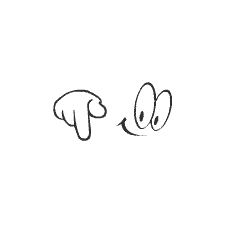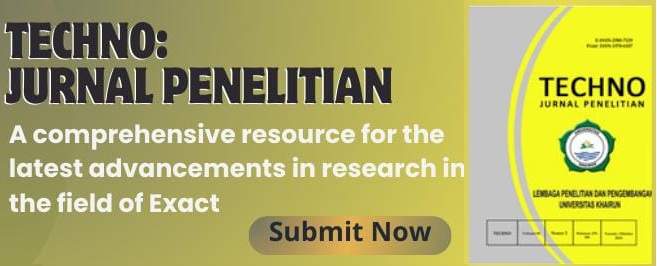The Design and Implementation E-Scaffolding Enhance Learning (ESEL) Using Web-based Simulation on Moment of Inertia
Abstract
Keywords
Full Text:
PDFReferences
Ardiyati, T. K., Wilujeng, I., Kuswanto, H., & Jumadi. (2019). The Effect of Scaffolding Approach Assisted by PhET Simulation on the Achievement of Science Process Skills in Physics. In Journal of Physics: Conference Series, 1233(1), p. 012035. https://doi.org/10.1088/1742-6596/1233/1/012035
Dasilva, B. E., Kuswanto, H., Wilujeng, I., & Jumadi. (2019). SSP Development with a Scaffolding Approach Assisted by PhET Simulation on Light Refraction to Improve Students’ Critical Thinking Skills and Achievement of Science Process Skills. In Journal of Physics: Conference Series, 1233(1), p. 012044. https://doi.org/10.1088/1742-6596/1233/1/012044
Guzdial, M. (1994). Softwareâ€ÂRealized Scaffolding to Facilitate Programming for Science Learning. Interactive Learning Environments, 4(1), 001-044. https://doi.org/10.1080/1049482940040101
Hamid, R., Sentryo, I., & Hasan, S. (2020). Online learning and its problems in the Covid-19 emergency period. Jurnal Prima Edukasia, 8(1), 86–95. https://doi.org/10.21831/jpe.v8i1.32165
Jumaat, N. F., & Tasir, Z. (2014). Instructional scaffolding in online learning environment: A meta-analysis. In 2014 international conference on teaching and learning in computing and engineering, 74-77. https://doi.org/10.1109/LaTiCE.2014.22
Konstantinidis, A., Theodosiadou, D., & Pappos, C. (2013). Web 2.0 tools for supporting teaching. Turkish Online Journal of Distance Education, 14(4), 287–295. https://doi.org/10.17718/tojde.55896
Linder, S. P., Abbott, D., & Fromberger, M. J. (2006). An instructional scaffolding approach to teaching software design. Journal of Computing Sciences in Colleges, 21(6), 238-250.
Quintana, C., & Fishman, B. (2006). Supporting science learning and teaching with software-based scaffolding. American Educational Research Association, 1–20.
Quintana, C., Reiser, B. J., Davis, E. A., Krajcik, J., Fretz, E., Duncan, R. G., Kyza, E., Edelson, D., & Soloway, E. (2004). A scaffolding design framework for software to support science inquiry. The Journal of the Learning Sciences, 13(3), 337–386. https://doi.org/10.1207/s15327809jls1303_4
Saprudin, S., Rahman, N. A., Amiroh, D., & Hamid, F. (2021). Studi Literatur: Analisis Penggunaan e-Book dalam Pembelajaran Fisika. Titian Ilmu: Jurnal Ilmiah Multi Sciences, 13(2), 20-26. https://doi.org/10.30599/jti.v13i2.1144
Saprudin, S., Ahlak, I., Salim, A., Haerullah, A. H., Hamid, F., & Rahman, N. A. (2022). Pengembangan e-Modul Interaktif Getaran dan Gelombang (eMIGG) untuk Pembelajaran IPA di SMP. Jurnal Pendidikan MIPA, 12(1), 97-106. https://doi.org/10.37630/jpm.v12i1.549
Sarah, L. L. (2022). The Implementation of Web Based E-Scaffolding Enhance Learning (ESEL) on Centre of Mass Concept Understanding. Jurnal Inovasi Pendidikan IPA, 8(1). https://doi.org/10.21831/jipi.v8i1.46476
Sataloff, R. T., Johns, M. M., & Kost, K. M. (2019). Reverse Design: Half-life.
Smit, J., Gijsel, M., Hotze, A., & Bakker, A. (2018). Scaffolding primary teachers in designing and enacting language-oriented science lessons: Is handing over to independence a fata morgana? Learning, Culture and Social Interaction, 18, 72–85. https://doi.org/10.1016/j.lcsi.2018.03.006
Toledano, C. A. (2013). Web 2.0: the origin of the word that has changed the way we understand public relations. In Proceedings of Barcelona International PR Conference, 1-12.
Tyagi, S. (2012). Adoption of Web 2.0 Technology in Higher Education: A Case Study of Universities in National Capital Region, India. International Journal of Education and Development Using Information and Communication Technology, 8(2), 28–43.
Wilson, D. W., Lin, X., Longstreet, P., & Sarker, S. (2011). Web 2.0: A Definition, Literature Review, and Directions for Future Research. In AMCIS 2011 Proceedings, January, Paper 368.
Yusuf, M., & Wulan, A. R. (2016). Penerapan Model Discovery Learning Tipe Shared Dan Webbed Untuk Meningkatkan Penguasaan Konsep Dan Kps Siswa. Edusains, 8(1), 48–56. https://doi.org/10.15408/es.v8i1.1730
DOI: https://doi.org/10.33387/tjp.v11i1.4191
Refbacks
- There are currently no refbacks.
Copyright (c) 2022 Lia Laela Sarah

This work is licensed under a Creative Commons Attribution-NonCommercial 4.0 International License.
-------------------------------------------------------------------------------------------------------------------------------------------------------------------
-------------------------------------------------------------------------------------------------------------------------------------------------------------------
TECHNO: Jurnal Penelitian
Published by: LPPM Universitas Khairun
Addres : Jalan Yusuf Abdurrahman Kampus II Unkhair, Kelurahan Gambesi, 97722 Kecamatan Kota Ternate Selatan, Provinsi Maluku Utara, Email: techno@unkhair.ac.id | URL: http://ejournal.unkhair.ac.id/index.php/Techno
Techno Jurnal Penelitian is licensed under a Creative Commons Attribution-NonCommercial 4.0 International License.



























